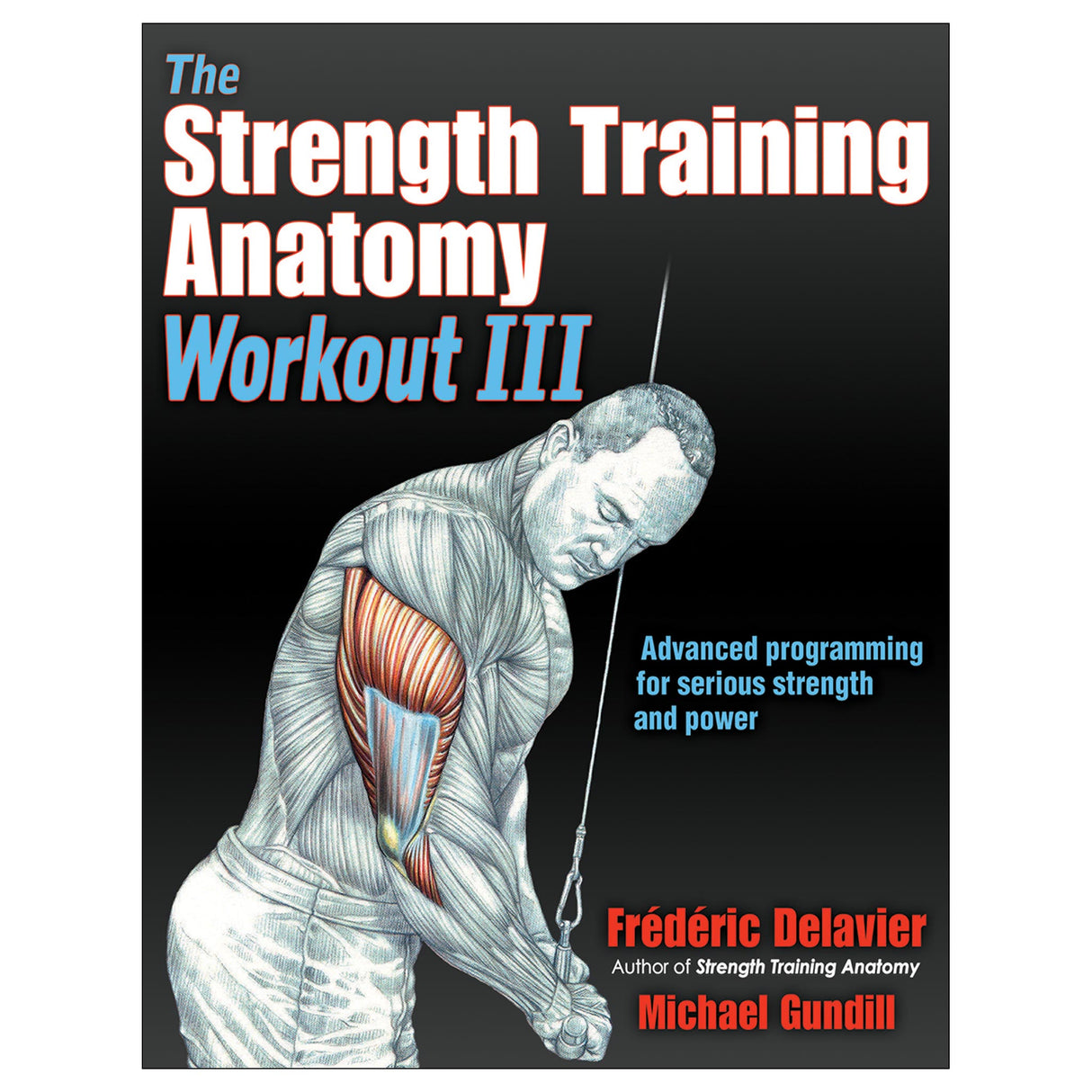The Strength Training Anatomy Workout III
Maximizing Results with Advanced Training Techniques
Author: Frederic Delavier, Michael Gundill
$29.95 USD
- How to achieve strength gains when the more you progress, the harder it is to progress further
- How to keep popular misconceptions from limiting your training
- How to solve typical problems that you experience after years of strength training
In the striking detail that only Frédéric Delavier provides, The Strength Training Anatomy Workout III will help you cross the threshold to advanced muscle development and strength gains.
Audience
Strength training enthusiasts and bodybuilders serious about building muscle and increasing strength. Also a resource for personal trainers, strength and conditioning coaches, and health and medical professionals.Analyze Your Anatomy and Morphology
- The Worst Squat in the World
- Anatomy and Morphology: Concepts That Are Often Misunderstood
- There Is No Miracle Exercise That Is Perfect for Everyone
- Are the Proportions of the Vitruvian Man Real?
- A Few Simple Rules
- Analysis of Arm Length
- Long and Short Torsos
- The Ratio Between the Abdomen and the Rib Cage
- Large Hips/Narrow Hips: How Does This Affect the Thighs?
- Short Thighs/Long Thighs
- The Paradox of Upper-Body/Lower-Body Development
- Genetic Secrets of the Calves
- Conclusion
- When Your Future Is Obvious From Your Morphology
- Success, Yes… but Not at Any Cost!
- Be Clever Like a Chess Player
- Start With a Total Body Warm-Up
- Specific Warm-Up for Weak Areas
- Complete Warm-Up for the Muscle Groups That You Plan to Work
- The Function of Relaxin
- Fatigue: Another Cause of Joint Hypermobility
- The Weather Report and Joint Pain
- How to Manage Temporary Joint Hypermobility or Sensitivity to the Weather
- What to Do If a Hypermobile Joint Does Not Get Better
Can an Athlete Escape Wolff’s Law?
What Is the Proper Range of Motion for Maximum Gain Without Injury?
- Partial or Full Repetitions?
- The Advantages of a Full Range of Motion/Disadvantages of a Partial Range of Motion
- The Disadvantages of a Full Range of Motion/Advantages of a Partial Range of Motion
- Conclusion
Part II. Training and Recovery Techniques
Advanced Training Techniques
- Target Muscles With Surgical Precision
- The Method of Contraction Influences the Muscle Area That Is Recruited
- Strategies for Adjusting Rest Breaks Between Sets
- Practical Applications of the Jendrassik Maneuver
- Changing the Center of Gravity by Adding Weight
- The Give-and-Take Theory for Progress
- Electrical Muscle Stimulation
- What Is the Point of Blood Flow–Restricted Training?
- Vibration and Oscillation Techniques
- A Better Definition of the Concept of Overtraining
- Heterogeneous Recovery Times
- Double Shock
- Nervous System Damage Following a Workout
- How Can You Promote Nerve Recovery?
- Understanding Aches and Pains Better
- Ensure Tendon and Joint Recovery
- Master Recovery Through Targeted Supplementation
Part III. Strength Training
Enlarge and Protect the Shoulders
- Specific Shoulder Pathologies
- Problems Developing the Shoulders
Jammer Press
One-Arm Lateral Raise, Cheating, With a Dumbbell
Attack the Complex Muscles of the Back
- Anatomy and Morphology Characteristics
- Pathology Specifics
- Problems Developing the Back
Deadlift for the Latissimus Dorsi
Reverse Hyperextension
Delavier’s Shrug
Target the Chest
- Why Is the Development of Chest So Unbalanced?
- Anatomy Specifics
- Specific Information About Good Training Materials
Floor Press
Build the Biceps, Triceps, and Forearms
- Problems Developing the Biceps
- Problems Developing the Triceps
Power Biceps Curl Using a Low Pulley
Power Triceps Extension Using a High Pulley
Strengthen the Core
- Problems With Core Strength
- Problems Trimming Fat
- Problems With Water Retention in the Abs
- Problems With a Muscle That Lacks Endurance
Standing Power Crunch With a Resistance Band for Dynamic Core Work
Fill In the Quadriceps
- Biomechanical Specifics
- Specifics About Proper Training Materials
- Morphological Characteristics
- Problems Developing the Quadriceps
Squat Using a Machine
Vertical Leg Press
Catch Up the Hamstrings
- Anatomy and Morphology of the Hamstrings
- Problems Developing the Hamstrings
- Problems With Regional Recruitment of the Hamstrings
Hip Extension
Fill In the Adductors and the Sartorius
- Anatomy and Morphology of the Adductors
- The Sartorius Is an Indispensable Muscle for Competitions
Sartorius Exercise
Understand and Manage Unequal Development in the Calves
- Physiological Characteristics
Part IV. Advanced Programs
Advanced Warm-Up Programs
- Basic Warm-Up
- Complete Warm-Up
- Catch Up the Arms
- Catch Up the Upper Chest
- Catch Up the Back of the Shoulders
- Catch Up the Back
- Catch Up the Thighs












